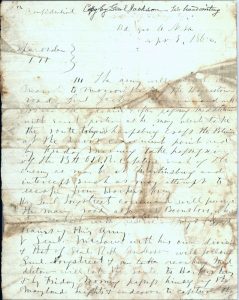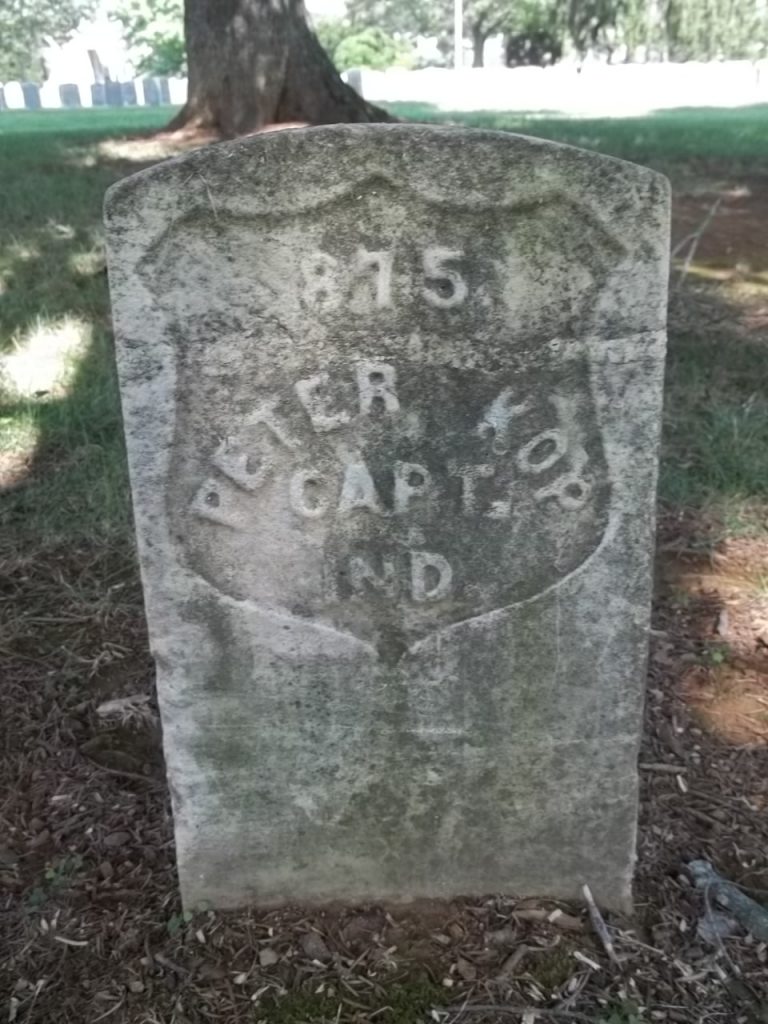The Unlucky Lost Order

Wilbur D. Jones, Jr., historian of the 27th Indiana Infantry, claimed that the regiment’s discovery of a lost copy of Special Orders No. 191 in a field outside of Frederick, Maryland, 159 years ago today “is the capstone story of the 27th Indiana.” He’s right, as that act plunged the regiment into eternal fame for its involvement in one of the best-known stories of the American Civil War. The discovery of the Lost Order was also probably one of the luckiest finds of the war. Plucking an envelope out a large, open field that just so happened to contain a lost copy of the Army of Northern Virginia’s plans for the second phase of the Maryland Campaign is exactly that: lucky. However, a great bit of bad luck accompanied this incredible find.
For the four men associated with the Lost Order’s discovery, none of them made it out of the campaign’s largest battle, Antietam, unscathed. First Sergeant John Bloss, who first noticed the package lying in the grass and was the first Federal soldier to read it, received wounds to both legs on September 17, 1862. Corporal Barton Mitchell, the man who recognized the object as an envelope, was hit in the left calf. Private David Vance, who picked up the envelope and handed it to Bloss, was likewise hit once each in the right hand and left knee.
Bloss quickly recognized that the Lost Order might be important to his superiors and passed it up the chain of command. Captain Peter Kop, Bloss’ company commander, was the first commissioned officer to read the order. At Antietam, he was wounded in the lungs.

Fortunately, all three of the enlisted men survived their wounds. Mitchell died in 1868 and Bloss died in 1905. Vance had outlived them all when he died in 1917. Unfortunately, Capt. Kop succumbed to his wounds on September 24, 1862. His remains rest in the officers’ section of Antietam National Cemetery beneath headstone number 875.
The lucky discovery led to immediate bad luck for the finders of the Lost Order.
Interesting take on the discovery of S.O. 191, Kevin. The 27th Indiana saw some heavy fighting. Who knows what else we may have learned about the discovery of the orders if comrades who lost their lives had lived to later reveal camp chatter about the incident. You and the other readers here may find the third chapter of my new book, Their Maryland, interesting in this regard. Titled “Four Days on the Monocacy: Confederate Encampments Near Frederick City and the Implications for the Lost Orders Debate” I demonstrate that the only available evidence shows 1) D. H. Hill’s division camped along Ballenger Creek near Frederick miles from where the orders were discovered and that 2) Hill’s HQ was located at either the George Markell Farm near his division or in Frederick proper at the confiscated home of BG James Cooper. There is no evidence that Hill ever camped near or traveled past the place where S.O. 191 was found. The mystery why it was there deepens!
i have read about Corp. Mitchell and Sgt. but didn’t know about Pvt. Vance and CPT Kop … thanks telling the rest of the Lost Orider story.
I had not thought about what happened to the soldiers from the 27th who found the order. And thanks to you, I now know. Another civil war story that has been unearthed.
Pvt. David Vance was the uncle of future Hall of Fame pitcher Dazzy Vance.
One theory (by Joe Ryan) is that the “lost order” was deliberately left where the union army would find it, & was a ruse to mislead McClellan. But then is it not substantially the same as the 3 other extant copies? One wud think that if it were a ruse, it would have been a unique document.
What are “the 3 other extant copies?” There are actually in existence five “extant copies:” (1) Special Order 191 signed by Chilton and sent to Cooper. It has two paragraphs; (2) Special Order 190, eight paragraphs, written in the hand of an unidentified clerk and sent by Lee to Davis on September `12, 1862; (3) Special Order 191, ten paragraphs, written by A.P. Mason into Chilton’s letter book; (4) Special Order 191, eight paragraphs, written in the hand of Stonewall Jackson; (5) Special Order 191, eight paragraphs, copied by an unknown hand from Jackson’s copy and addressed “for D.H. Hill.” The Lost Order is indeed a “unique” document as it is the only one of the five addressed to D.H. Hill.